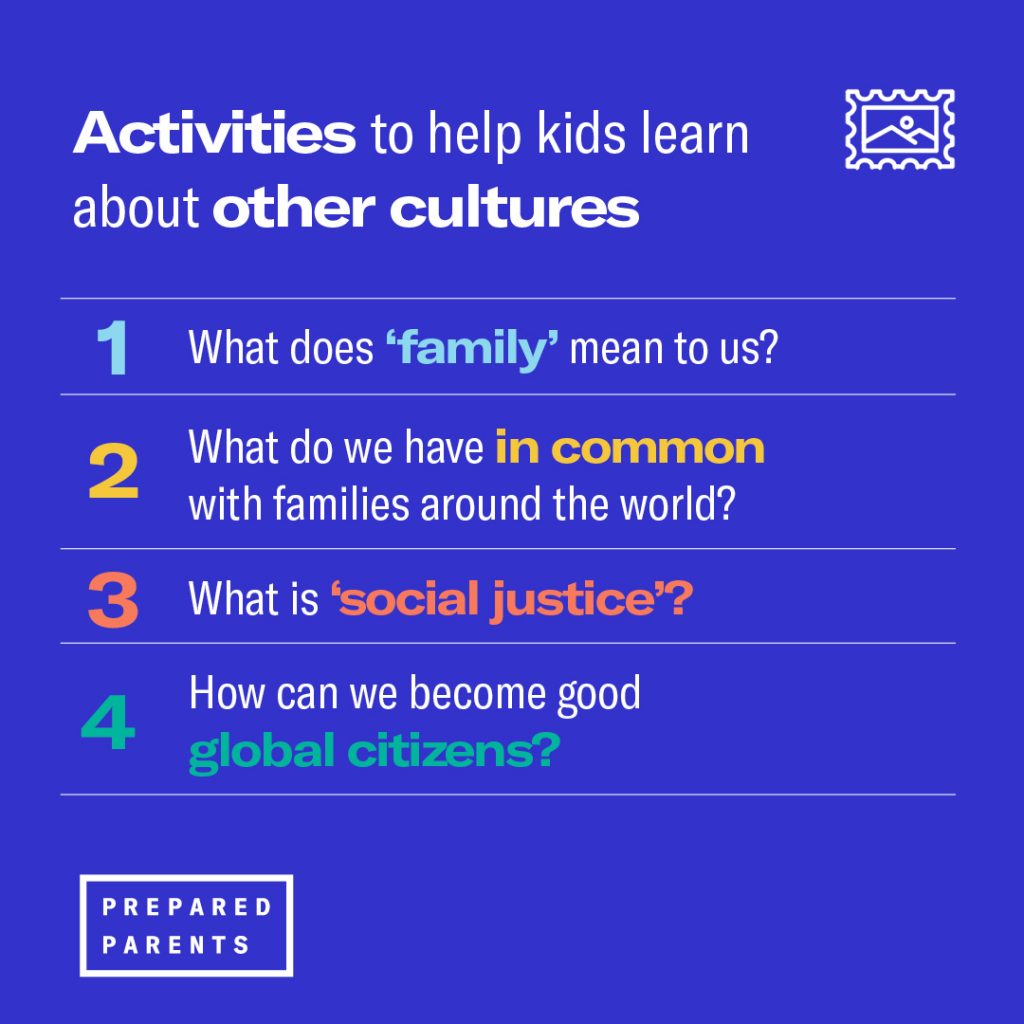In 1994, the United Nations declared May 15th International Day of Families. It’s an annual opportunity to honor families around the world while shedding light on some of the challenges they face, like poverty, limited educational opportunities, and adequate health care.

Let’s use this day as a springboard to learn more about what family life looks like globally. Exposing kids to other cultures broadens their horizons and breaks down prejudice and bias. It also builds self-awareness. How have our rituals, opinions, likes, and dislikes been shaped by our own culture?
Knowledge about cultural similarities and differences encourages kids to build a more diverse friend group. And from an academic perspective, they learn about geography, language, history, and art, to name only a few subjects.
“Self-perceptions influence, among other things, how we think about the world, our social relationships, health and lifestyle choices, community engagement, political actions, and ultimately our own and other people’s well-being.”
-2016 study on cultural models of selfhood
International Day of Families is a time of celebration, but also a time for serious conversations about some of the challenges families around the world face. Take some time to promote awareness and a better understanding with these six activities for your family to try. Download the Projects at Home tool to use with any of these.
Sit down together to discuss the meaning of “family.”
- Is it the number of people in a household?
- The number of relatives one child has?
- Can a family include people who are not related?
- How does our family compare to the families of friends locally and around the world in size, make up, and traditions.
Using the definition of family kids landed on in the previous activity, ask them to compare family life in states across the country and or in countries around the world. How are they the same? Different?
This is also a chance for a little research into the origins of your own family. Interview grandparents or other relatives to learn more. Ancestry.com offers free access to records from the National Archives, a treasure trove of historical documents.
Many families deal with poverty, unfair labor practices, a lack of health care, and limited educational opportunities. To open the conversation about these issues, organize a scavenger hunt:
- Pick a theme. A theme could be the plight of laborers.
- Collect things around the house like food, clothing, or knick-knacks— and check the manufacturing labels.
- Investigate where and how these items were made. This will help your kid develop awareness of the plight of laborers elsewhere, including children.
- Talk about how much money workers may earn in other countries and why that may mean kids have to work too.
- What needs to happen to help these families?
You’re teaching your kids about social justice and that introduces them to their power for positive change.
Use this curated list of films to discover stories of family life in other countries. You’ll find more on Netflix and Amazon Prime. Before you hit play:
- Ask your kids to look for what’s the same and what’s different in each family’s life.
- Do they want to learn more about the culture shown in the movie? What do they want to know?
- Encourage them to make a list of questions they can use to follow their curiosity.
Another activity could be a virtual museum visit. Check out the International Council of Museums’ International Museum Day. Use this interactive map to virtually explore any of the hundreds of museums around the world participating in the event.
The whole family can play this game. Write the names of countries on slips of paper, fold them, and put them in a bowl. Each person chooses one and now has to learn at least one thing about family culture in that country.
- What responsibilities do parents have?
- What about grandparents, aunts, and uncles?
- How do kids interact with other family members?
- What did they discover that they want your family to try?
These activities can be eye-opening for kids, especially as they learn some hard facts about challenges families face. Rather than feel helpless, encourage your kids to practice empathy as global citizens and choose an organization or initiative to support. To make an informed decision, research charities through Charity Navigator.
At the end of the day, is your kid’s awareness about family life heightened? Have they developed empathy as they’ve learned about how other families live? Celebrating the International Day of Families can enrich your kid’s life and make the world seem just a little smaller.

